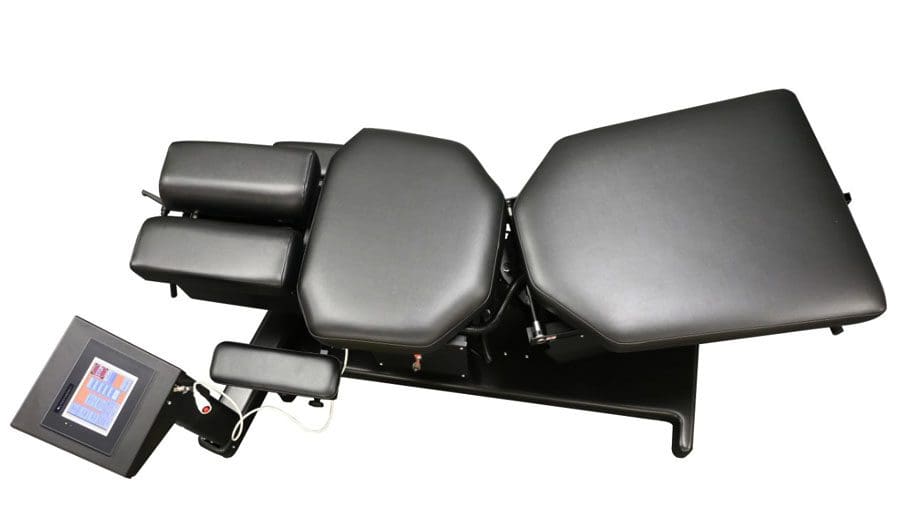
Spinal Decompression Institute
Injury Medical Chiropractic Functional Medicine and Spinal Decompression Institute offer progressive technology to treat neck and back-related injuries, conditions, and disorders. We utilize a non-surgical spinal decompression system combined with chiropractic adjustments and therapeutic massage that combats back and neck pain. These combined techniques relieve nerve compression and separate the vertebrae in the back or neck to allow for optimal healing. Individuals suffering from herniated discs, sciatica, spinal stenosis, or pinched nerves can undergo decompression treatment to slow, stop, and reverse back issues.

Spinal Decompression Institute
The spine/back is a complex structure of joints, bones, ligaments, and muscles. Individuals can sprain ligaments, strain muscles, rupture disks, and irritate joints, leading to back issues and pain. Injuries from work, school, automobile accidents, and sports can lead to health issues that can become chronic and cause permanent damage.
- Motorized mechanical decompression separates the vertebrae and discs, allowing them to realign and reset properly while increasing circulation, hydration, and oxygenation into the discs to heal fully.
- This removes the compression on pinched nerves.
- This is spinal retraining so the spine can remember a new healthy position.
What A Session Consists Of
- The individual’s doctor, spine specialist, or chiropractor will determine the treatment plan after their in-person physical evaluation and review of imaging scans like X-rays and/or MRI.
- Every case is different, but a session typically requires 20-30 minutes.
- Treatment plans differ in the number of sessions per week and the number of weeks necessary.
- Patients remain clothed during a spinal decompression therapy session and lie on a motorized table.
- Depending on the condition or injury, the patient could be in the prone position lying face down or lying supine face up.
- A harness is placed around the hips or neck.
- The technician/therapist sets up the program.
- The table will move slowly back and forth and/or to the sides to provide spinal traction, release the compression, and promote relaxation.
- There is no pain during or after the decompression therapy, but the patient will feel their spine stretch.
- To avoid any discomfort, the system has emergency stop switches for the patient and the therapist technician.
- The switches terminate the treatment immediately if the patient experiences pain or discomfort.
Physiological Well Being
- Increases blood circulation and promotes nutrient supply through the spine.
- Allows for proper disc rehydration.
- Prevents herniations from advancing or worsening.
Physical Well Being
- Lowers stress levels.
- Pain alleviation.
- Improves spinal mobility.
- Improves joint flexibility.
- Resume normal daily activities.
- Prevents muscle guarding.
- Helps to develop core strength.
- Helps to prevent new injuries.
At the Spinal Decompression Institute, we offer total care for complete health and well-being. Our goal is to thoroughly investigate the body’s health and determine the root cause of the pain. A successful spinal decompression program will help identify what led to the problem/s to prevent and avoid a recurrence of symptoms.
DRX9000 Non-Surgical Spinal Decompression System
References
Apfel, Christian C et al. “Restoration of disk height through non-surgical spinal decompression is associated with decreased discogenic low back pain: a retrospective cohort study.” BMC musculoskeletal disorders vol. 11 155. 8 Jul. 2010, doi:10.1186/1471-2474-11-155
Daniel, Dwain M. “Non-surgical spinal decompression therapy: does the scientific literature support efficacy claims made in the advertising media?.” Chiropractic & osteopathy vol. 15 7. 18 May. 2007, doi:10.1186/1746-1340-15-7
Koçak, Fatmanur Aybala et al. “Comparison of the short-term effects of the conventional motorized traction with non-surgical spinal decompression performed with a DRX9000 device on pain, functionality, depression, and quality of life in patients with low back pain associated with lumbar disc herniation: A single-blind randomized controlled trial.” Turkish Journal of physical medicine and rehabilitation vol. 64,1 17-27. 16 Feb. 2017, doi:10.5606/tftrd.2017.154
Macario, Alex, and Joseph V Pergolizzi. “Systematic literature review of spinal decompression via motorized traction for chronic discogenic low back pain.” Pain practice: the official journal of World Institute of Pain vol. 6,3 (2006): 171-8. doi:10.1111/j.1533-2500.2006.00082.x






